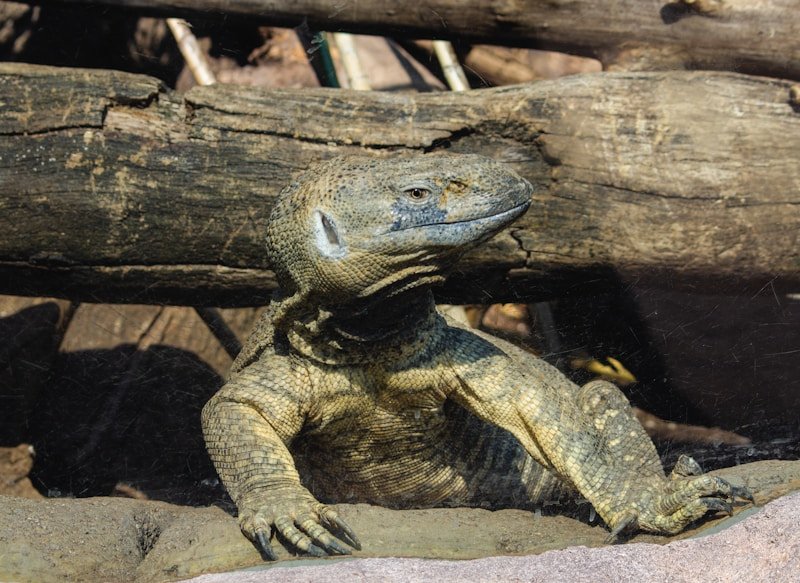Reptiles have fascinated humans for centuries with their prehistoric looks, unique behaviors, and, in some cases, lethal capabilities. Among these creatures, some possess venom or other deadly traits that make them formidable predators or dangerous to humans. In this article, we’ll explore the world of venomous and vicious reptiles, highlighting their characteristics, habitats, and the risks they pose.
The Most Venomous Snakes on the Planet
When people think of deadly reptiles, venomous snakes immediately come to mind. The world’s most venomous snakes are remarkable for the potency of their venom and their ability to deliver it effectively.
One notorious example is the Inland Taipans (Oxyuranus microlepidotus), native to Australia. Often called the “fierce snake,” its venom is considered the most toxic of any snake species. A single bite contains enough neurotoxins and myotoxins to kill multiple adult humans. Fortunately, it is shy and rarely encountered by people.
Another deadly snake is the Black Mamba (Dendroaspis polylepis) of Africa. Known for its speed and aggression, the Black Mamba delivers venom that can cause death within hours if untreated. Its combination of size, agility, and deadly venom has made it a symbol of fear in its native regions.
Other notable mentions include the King Cobra, the longest venomous snake, and various species of vipers and rattlesnakes, each with unique venom compositions that target the nervous system or blood clotting mechanisms.
Venomous Lizards: Unexpected Killers
While venomous snakes are well-known, venomous lizards are far less common but equally fascinating. The Gila Monster (Heloderma suspectum) and the Mexican Beaded Lizard (Heloderma horridum) are two of the few lizard species known to possess venom.
These slow-moving lizards inhabit desert regions of the southwestern United States and Mexico. Their venom is primarily used for defense, delivered through grooves in their teeth when they bite. Though not usually fatal to humans, their bite can cause intense pain, swelling, and other symptoms.
The discovery of venom in these lizards challenged previous assumptions that lizards were non-venomous and sparked new research into reptilian venom systems. Their venom contains compounds of medical interest, with potential for developing new painkillers and treatments.
Crocodilians: Powerful Predators With Deadly Jaws
Crocodilians, including crocodiles, alligators, and caimans, are not venomous but are undeniably deadly reptiles. Their power lies in brute strength, massive jaws, and ambush tactics rather than venom.
The Nile Crocodile (Crocodylus niloticus) and the Saltwater Crocodile (Crocodylus porosus) are among the largest and most aggressive crocodilian species. These reptiles can grow over 20 feet long and weigh over a ton. They are apex predators in their habitats, capable of taking down large prey, including humans.
Their hunting method involves stealthy approaches followed by explosive attacks, grabbing prey with their powerful jaws and dragging it underwater to drown. Their bite force is one of the strongest in the animal kingdom, allowing them to crush bones with ease.
Despite their reputation, crocodilians are vital to their ecosystems, helping maintain balance by controlling populations of other animals.
Safety Tips: How to Avoid Danger from Deadly Reptiles
While deadly reptiles command respect, most incidents involving them occur because of human carelessness or accidental encounters. Understanding how to avoid danger can significantly reduce risks.
Know Your Environment: When traveling to regions known for venomous snakes or crocodilians, research local species and their habitats. Stick to trails and avoid tall grass, rocky crevices, or water edges where snakes or crocodiles may hide.
Wear Protective Clothing: Boots, long pants, and gloves can provide some protection against snakebites, especially when hiking or working outdoors in snake-prone areas.
Stay Alert: Pay attention to your surroundings. Many venomous reptiles rely on camouflage and surprise attacks, so listening and watching carefully can give you early warning.
Never Handle Wild Reptiles: Avoid touching or provoking any wild reptile, no matter how harmless it appears. Even non-venomous species can bite defensively.
Learn First Aid: Knowing basic first aid for snakebite or reptile attacks can save lives. Seek immediate medical attention if bitten, and avoid outdated remedies like tourniquets or cutting the wound.
Deadly reptiles may seem terrifying, but with knowledge and respect, coexistence is possible. These animals play crucial roles in their ecosystems and offer opportunities for scientific discovery and medical advancement. By appreciating their power and danger, we can admire them from a safe distance and protect both ourselves and these ancient creatures.

